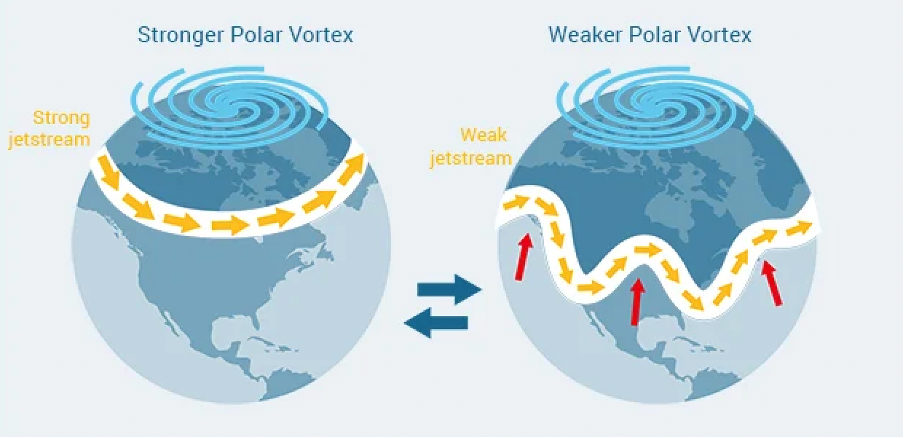
The Jet Stream: How does it Impact Earth's Climate - Part 2
Introduction
The jet stream is a high-speed, narrow band of strong winds located in the Earth's atmosphere (troposphere). It plays a crucial role in shaping our planet's weather patterns and climate. This atmospheric phenomenon impacts a wide range of weather events, from the daily weather we experience to climate changes.
What is a Jet Stream
The jet stream is formed as a result of temperature and pressure differences between the polar and tropical regions of the Earth. It exists at an altitude of about 10 to 15 kilometres above the Earth's surface, where it flows from west to east in both the northern and southern hemispheres. These winds can reach speeds to a very high level up to 400 kilometres per hour.
Impact on Weather
Weather Fronts: The jet stream influences the movement and intensity of weather systems, including low-pressure systems and cold and warm fronts.
Storm Development: The jet stream plays a significant role in the development of storms. When a low-pressure system interacts with the jet stream, it can intensify and create severe weather conditions, such as thunderstorms, hurricanes, and blizzards.
3. Temperature Variability: The position of the jet stream can also impact temperature extremes. For example, when the jet stream dips southward, it can bring cold Arctic air into lower latitudes, causing winter cold snaps. Conversely, when it moves northward, warmer air from the tropics may flow into regions typically experiencing cooler temperatures.
Impact on Climate
Seasonal Patterns: The jet stream's position shifts seasonally, impacting climate patterns. For instance, during the winter months, a southward shift of the jet stream can lead to colder winters in certain regions, while a northward shift can result in milder conditions.
Droughts and Floods: Prolonged changes in the jet stream's position can lead to extended periods of dry or wet weather. A stationary jet stream can contribute to droughts in some areas while causing excessive rainfall and flooding in others.
Global Climate Change: Some research suggests that the jet stream's behavior may be influenced by climate change. A wavier jet stream could lead to more extreme and unpredictable weather events.
Impact on Winter 2023/24
The weather forecast for the 2023/24 period confirms the prevalence of the El Niño event, anticipating alterations in jet stream patterns compared to the previous year. A continued trend of colder conditions is projected for the central and eastern United States, with Canada and Europe expected to experience predominantly warmer-than-average temperatures.
For more information: https://www.severe-weather.eu/long-range-2/winter-2023-2024-forecast-november-update-cold-el-nino-weather-united-states-canada-europe-fa/
Conclusion
The jet stream is a dynamic and powerful component of Earth's atmosphere that significantly impacts our weather and climate. Its influence on weather patterns, storm development, temperature variations, and long-term climate changes underscores the importance of understanding and monitoring this atmospheric phenomenon. Scientists continue to study the jet stream to improve weather forecasting and gain insights into how it may respond to a changing climate, helping us adapt to the challenges of a world where weather patterns are increasingly complex and variable.